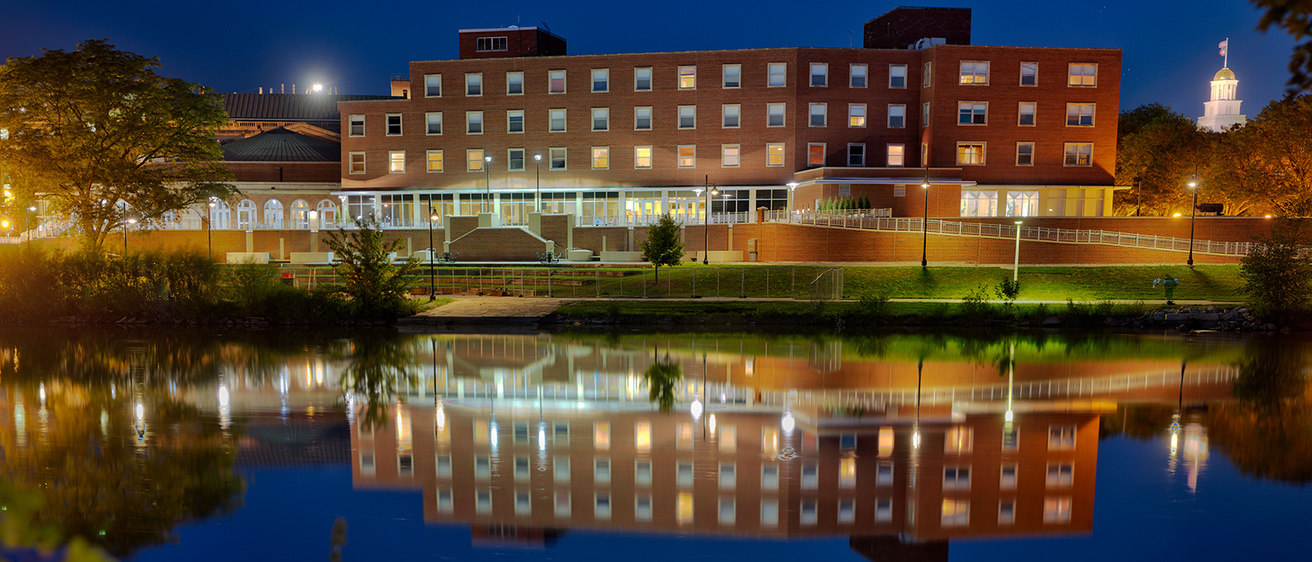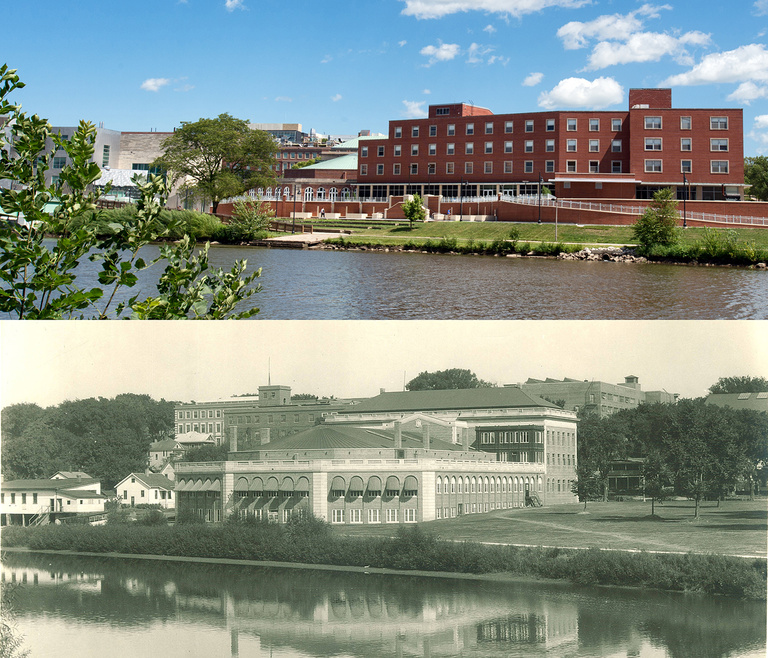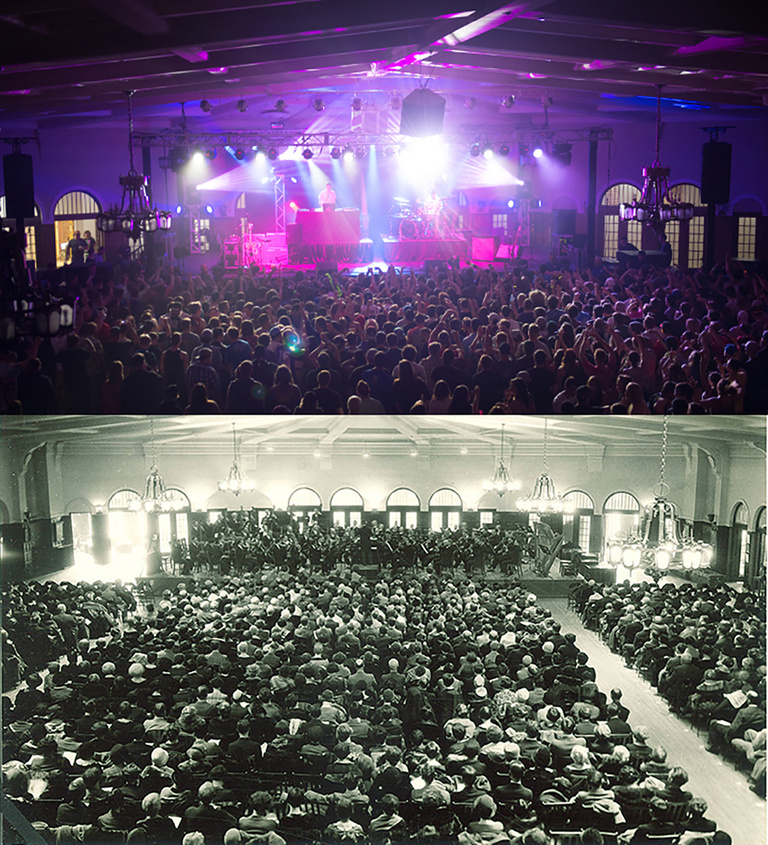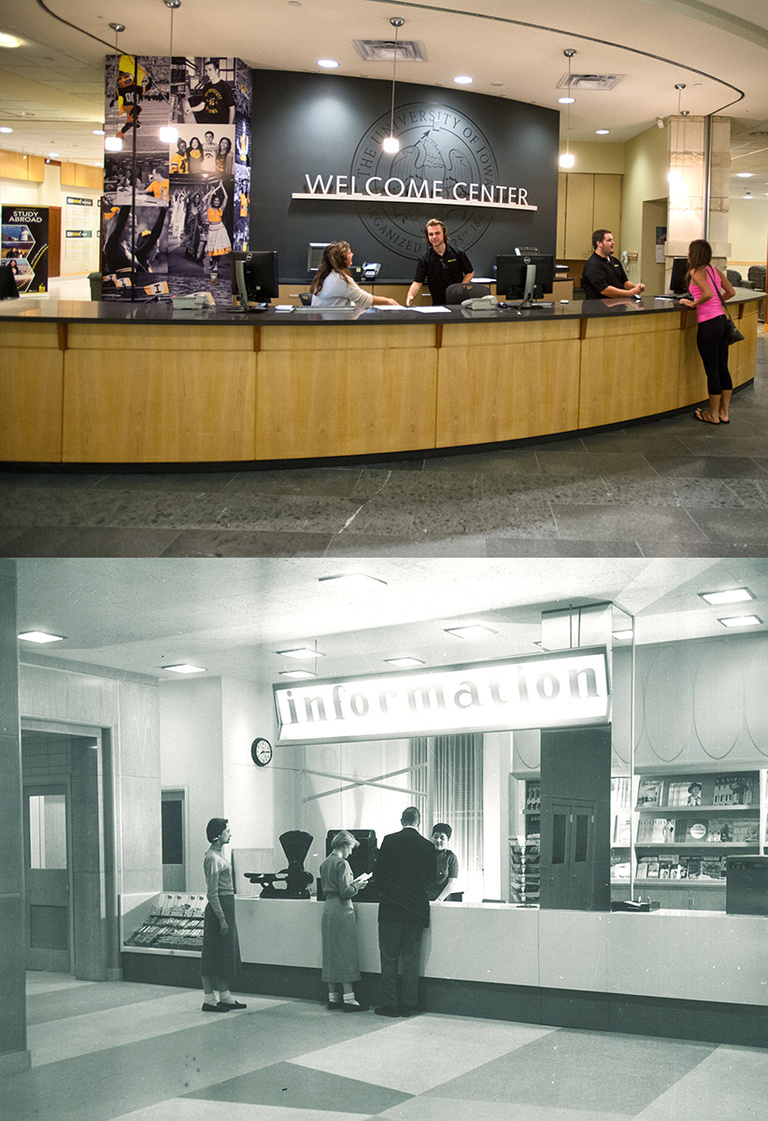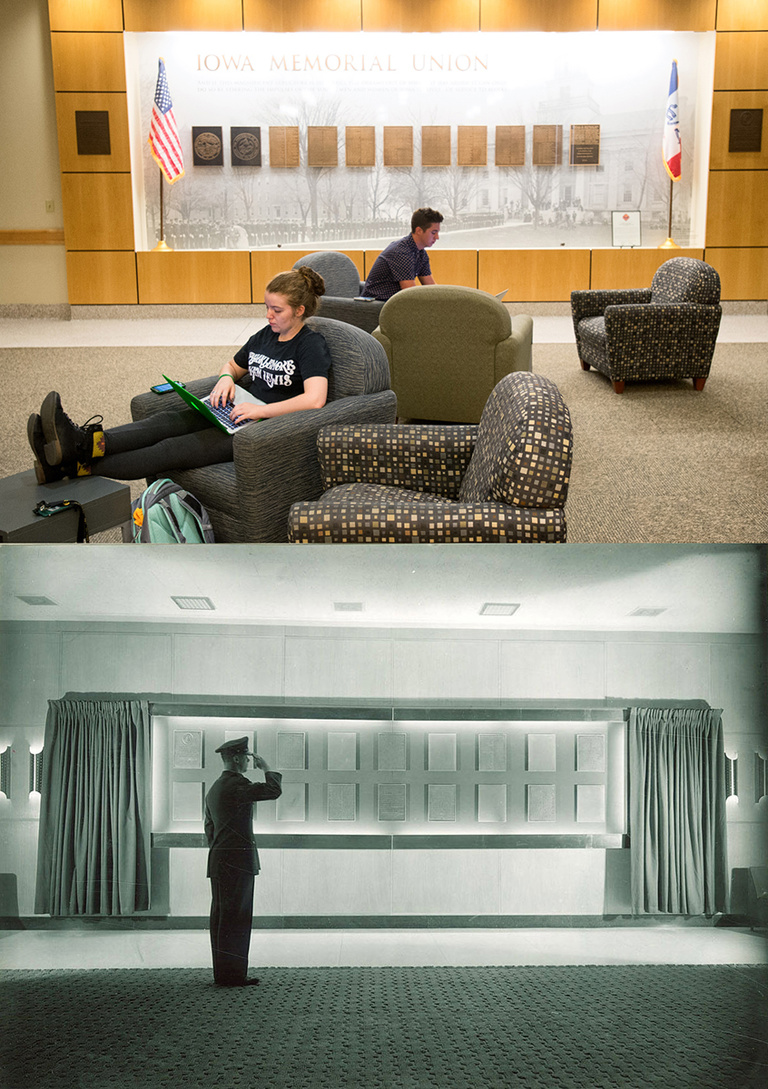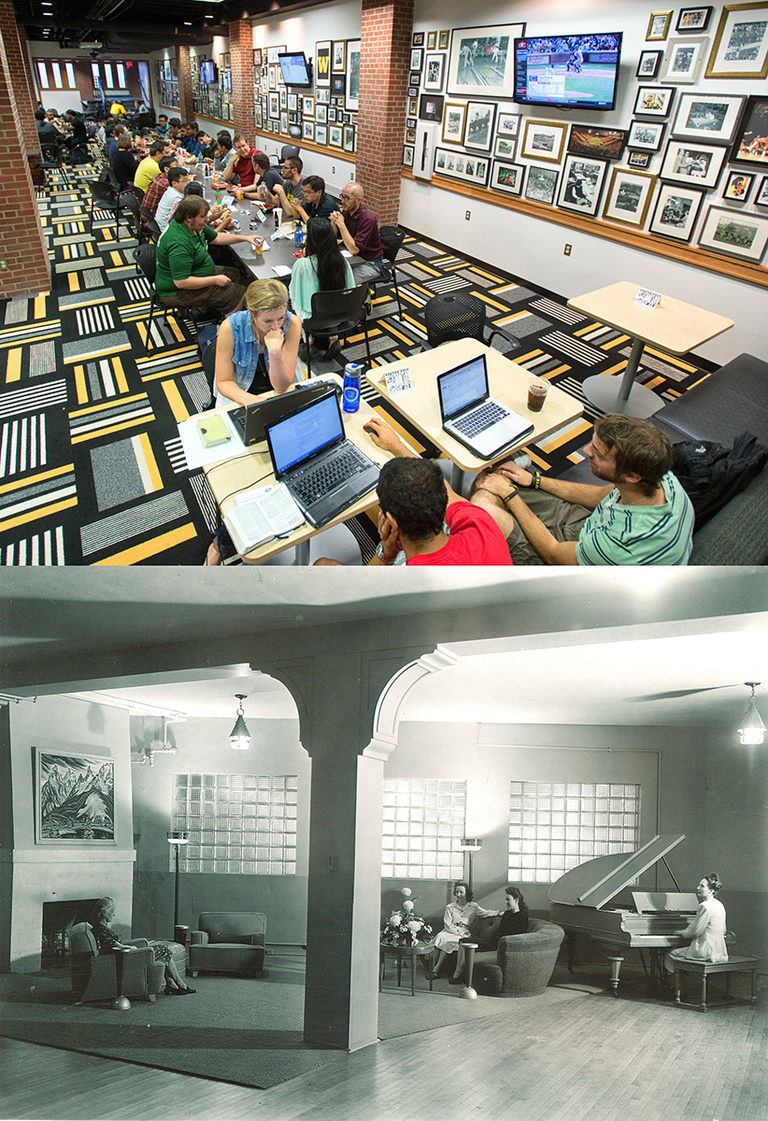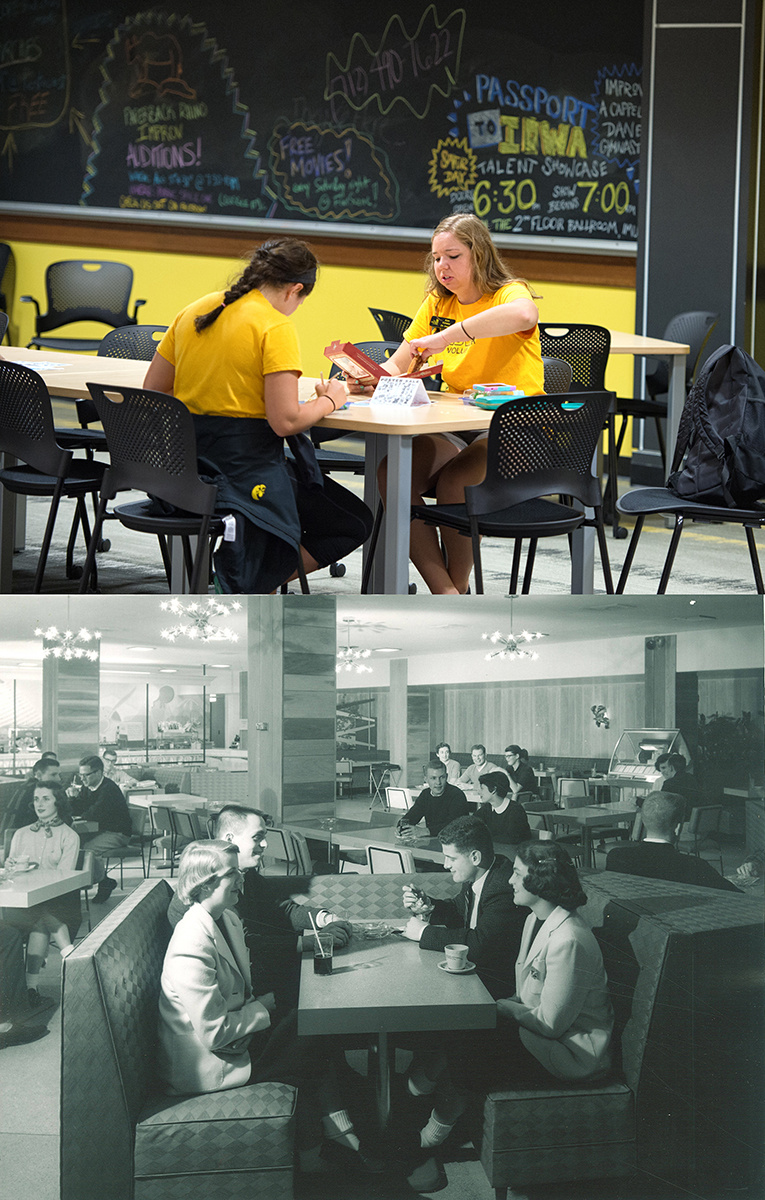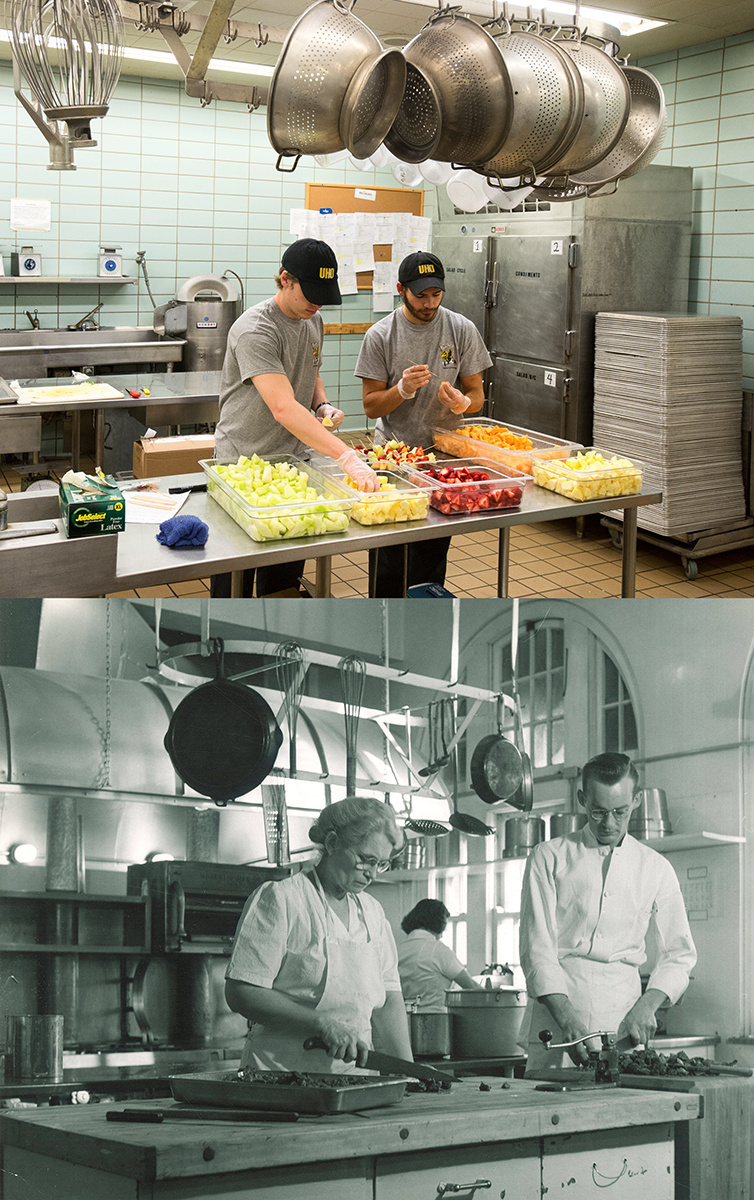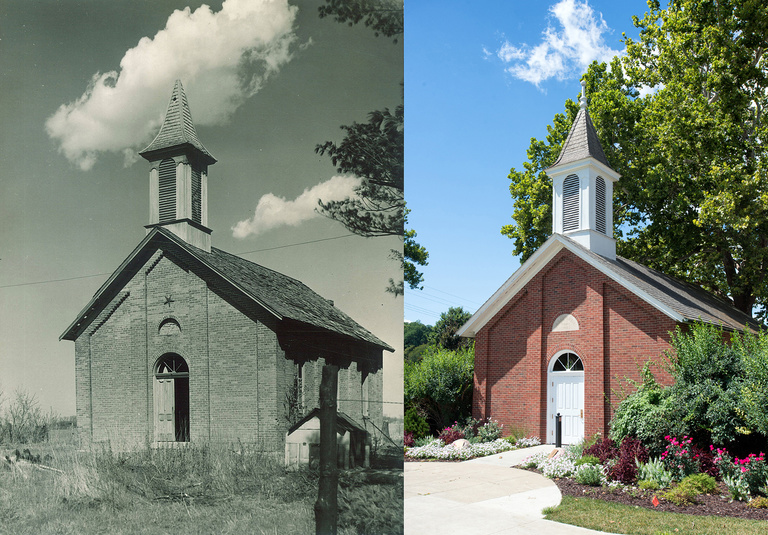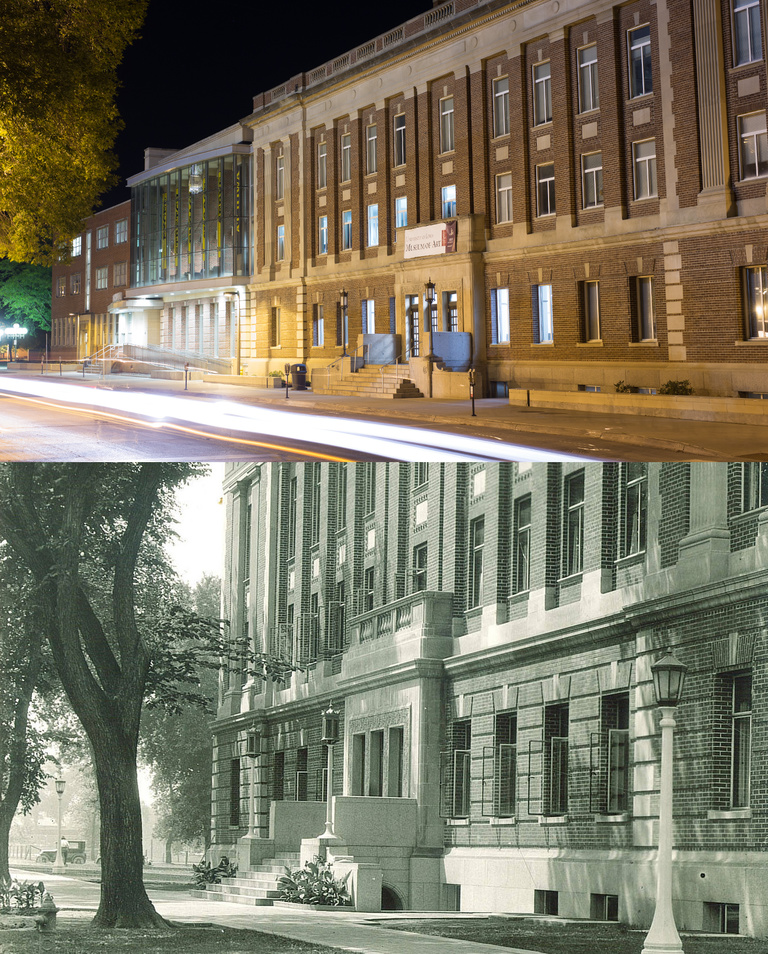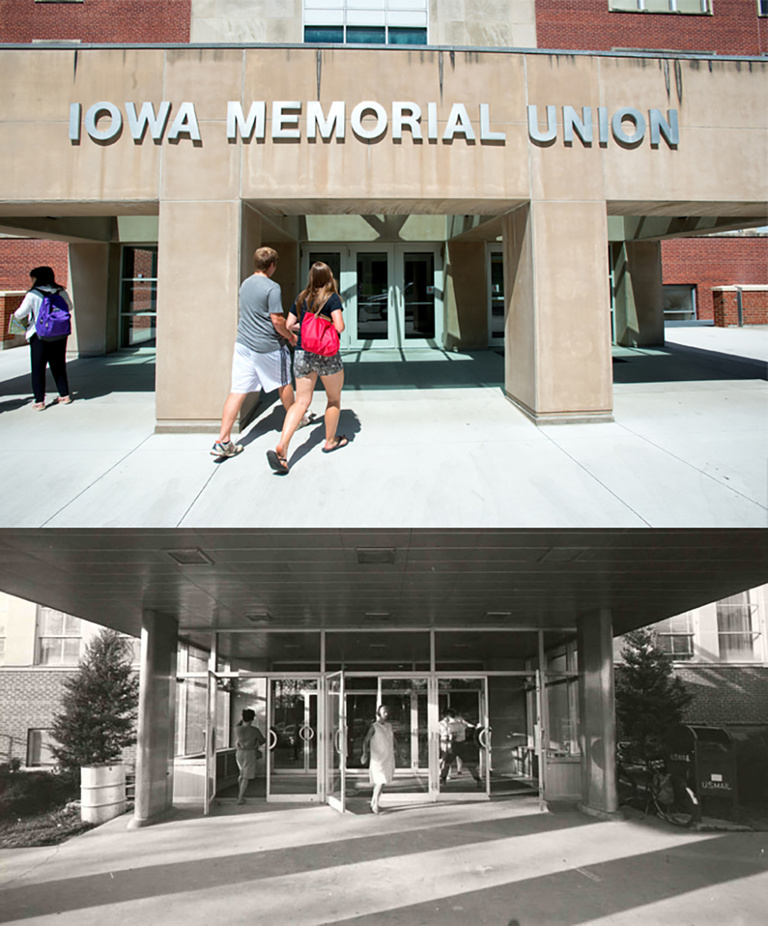A group of about a dozen teenagers and their parents shuffles down the ground floor corridor of the Iowa Memorial Union and pauses in front of the Iowa Hawk Shop entrance to listen to their guide.
“The ground floor of this building just opened a few weeks ago,” he tells them. “ You are some of the first people to see it.”
Heads turn to survey the surroundings: student employees standing just beyond the shop’s threshold, eager to greet customers; a dozen brand-new tables and chairs sitting atop black and gold carpet; and diners walking in and out of a food court from which inviting aromas emanate.
Seven years ago, in June 2008, this area was inundated with floodwater from the rising Iowa River, shutting down the building’s operations. Though the upper floors reopened in November of that year, the ground floor remained closed until June 2015—long enough for nearly two cohorts of students to graduate without setting foot in it.
The ground floor—long a central gathering spot on campus—is now open for all students and community members to use and enjoy, and a mitigation project completed outside should provide protection from future flooding. To celebrate the reopening, Iowa Now did a bit of research on the building, which UI President Emeritus Sandy Boyd describes as the “hearthstone of campus.”
1. The original part of the building is that which houses the Main Lounge
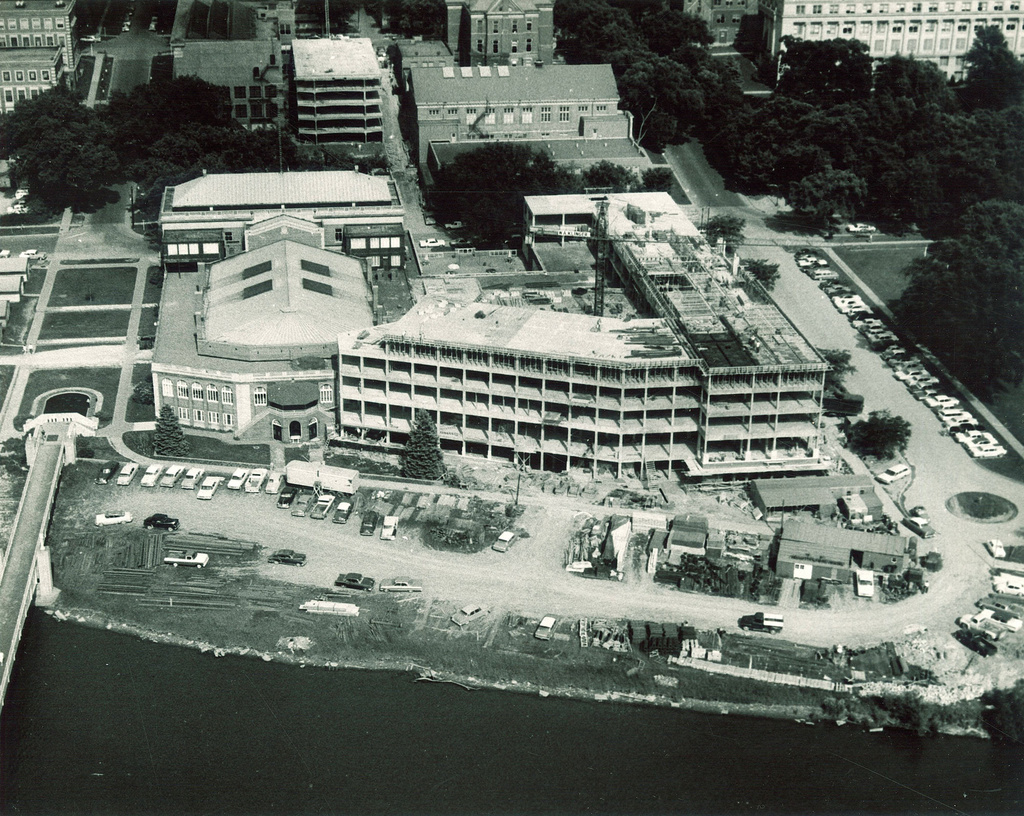
The building is no stranger to construction. Over the years, there were five major units added to the original section and several renovations. Here is the order of the projects:
- The original section (or Unit I), completed in 1925, included the Main Lounge, surrounding sun porch, and office space.
- Unit II, completed in 1927, included three stories to the east, which added a lobby, meeting rooms, and space for the private, faculty-run Triangle Club.
- Unit III, completed in 1955, included two floors—a ground floor and a first floor—to the south of Units I and II, and featured a recreation area, more office space, a student lounge, and library and music rooms.
- Unit IV, completed in 1965, expanded the ground and first floors to the west;
- Unit V, also completed in 1965, encompassed the 112-room Iowa House Hotel, which extended Unit IV up two floors and to the west along the Iowa River.
- Unit VI was another 1965 addition that augmented Unit III by two floors and included the Second Floor Ballroom, a small theater, and more than 20 meeting rooms named in honor of famous Iowans as well as Big Ten and Ivy League schools.
- A major renovation in 1988 linked (on the second and third floors) the first two units with the 1965 additions.
- Another renovation in 2006 included a three-story infill project, creating a new entrance on the east side and new office space for student organizations. It also added a river amphitheater outdoors, and remodeled the bookstore.
- After the flooding closed the ground floor in 2008, the UI began a $21.6 million flood mitigation and recovery project to restore some 83,000 square feet and raise the area next to the Iowa River to two feet above the 500-year flood level.
2. Although construction began in 1924, the university did not control the facility until 1943
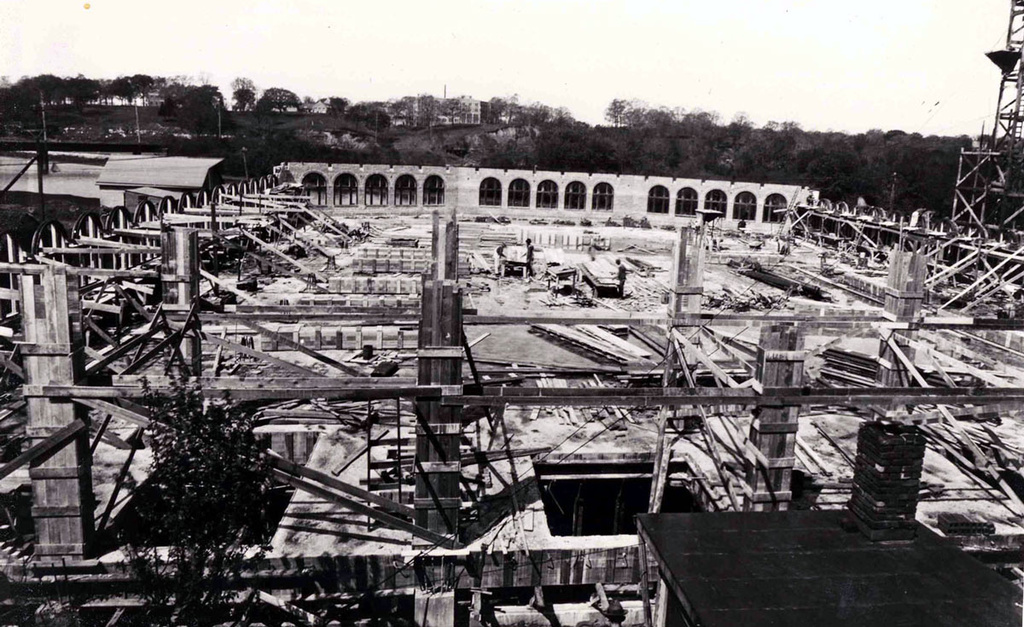
The idea for establishing a union was first floated around 1911; a club formed for male faculty and students and was housed at several different locations. When UI President Walter Jessup advocated in 1919 for the construction of a student union on campus, several locations were considered, including by Quadrangle (a new residence hall at the time) and on North Capitol Street, before the present site was selected. At the time of groundbreaking, however, Iowa law prohibited the use of state funds for the construction of nonacademic buildings on campus, so a corporation was created to raise money and manage the facility until it was paid off. The corporation’s board of trustees then gave it to the university.
3. As its name implies, the Iowa Memorial Union is indeed a memorial
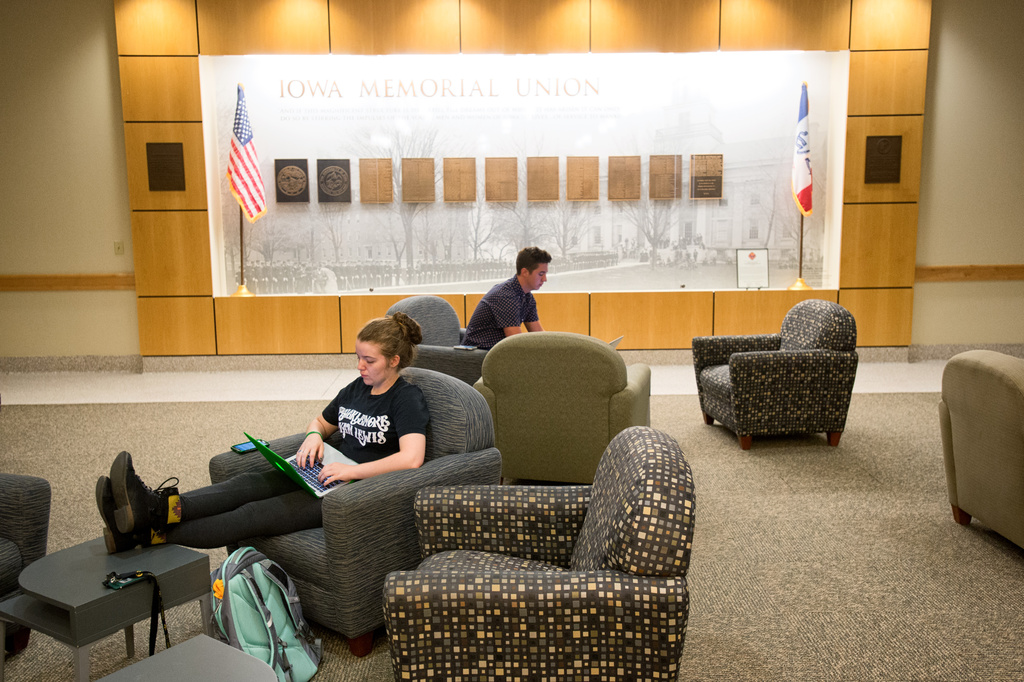
Increasingly common on college campuses at the time of the IMU’s original construction—shortly after the conclusion of World War I—were university buildings dedicated to students and alumni who lost their lives in combat. At Iowa, the need for a student union paired up well with the desire to honor those who sacrificed their lives. Inside the building, you’ll find engravings near the entrances to the Main Lounge with quotes that highlight the building’s dedication, and in the first-floor Hubbard Commons resides the Memorial Honor Roll, which lists on plaques the names of fallen service members (these names also are available online at imu.uiowa.edu/about/memorial). Further programming at the building is in the works to honor veterans.
On a related note, one way the corporation drew revenue to pay off construction debt was to rent the facility to the U.S. government during World War II, when much of the building was used for feeding and entertaining cadets in the Army Specialized Training Program.
4. The building has housed a soda fountain, a dry nightclub, a music library stocked with classical music, and a bowling alley
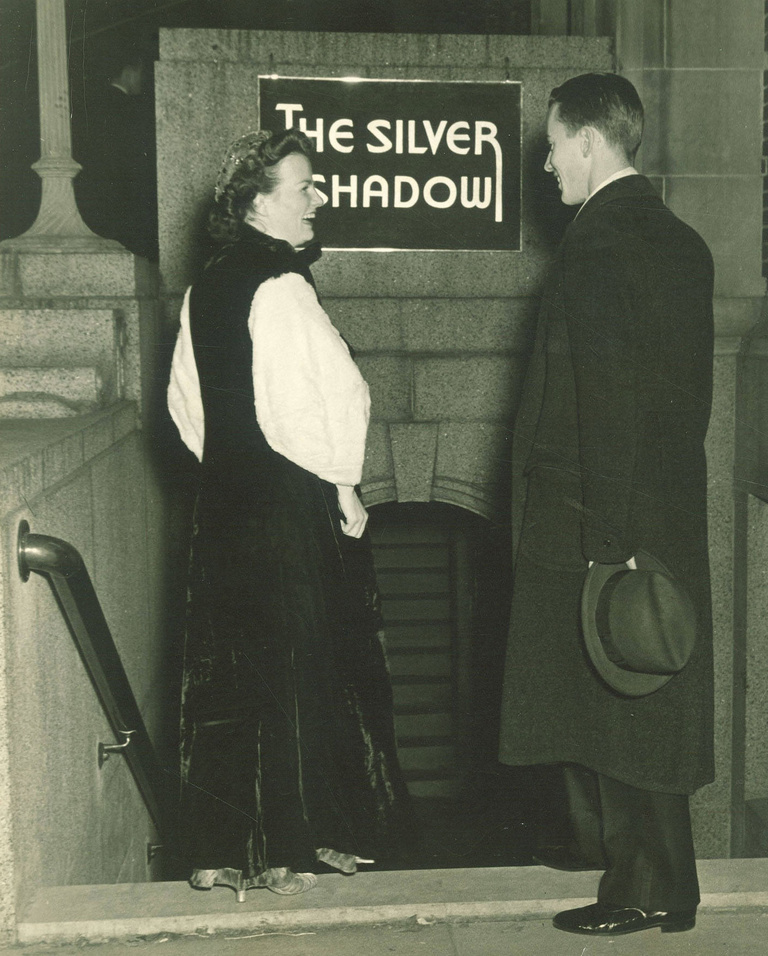
The activities and offerings at the IMU over its 90 years have reflected the times: In 1927 a soda fountain located off the Main Lounge sold chocolate sundaes for 15 cents, and in 1936 the ground-floor cafeteria was redecorated on the weekends to become the Silver Shadow, a place where students could listen to music and socialize without alcohol. In the 1930s, Carnegie Corporation donated funds to establish a classical music listening library where students could listen to records together, and special listening rooms were included in the blueprints for the 1955 addition. Also part of that 1955 addition was a recreation area on the ground floor, featuring billiards and a bowling alley; it generated more than twice the expected traffic.
Some of the modern-day features of the IMU are a food court offering fresh sushi and made-to-order sandwiches, an academic resource center, free wireless Internet, a bank, a student health clinic, a computer lab, six flat-screen TVs, and seemingly endless spots for cozy and quiet studying.
5. Early plans for the IMU called for the establishment of a chapel
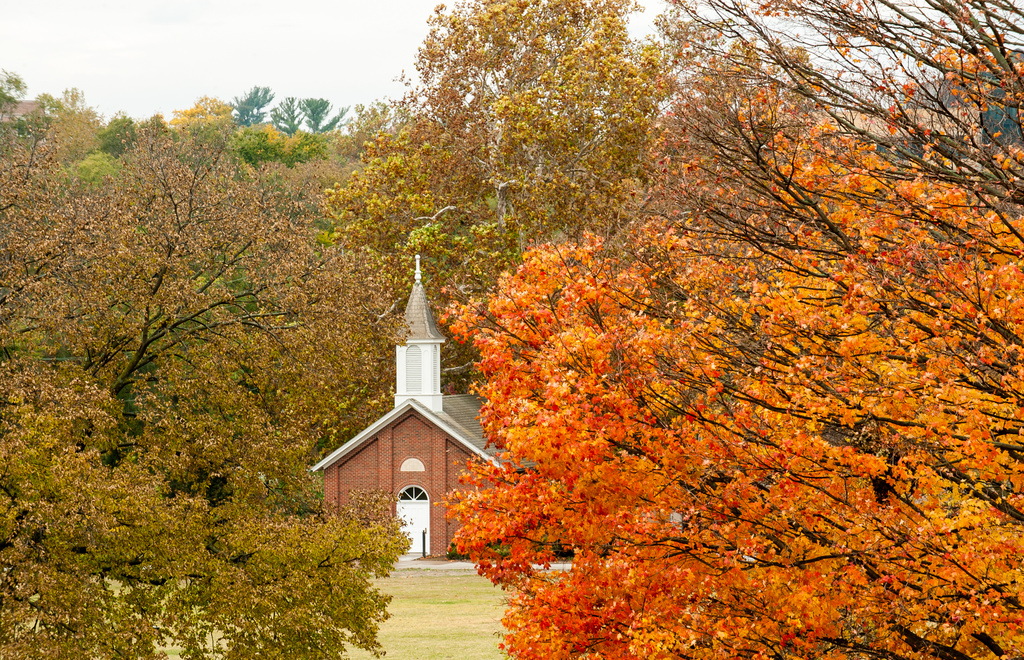
In the 1930s, then-director of the IMU, Rufus H. Fitzgerald, was part of a group pushing to reestablish a place for quiet meditation on campus—there had been no chapel on campus since 1892, when North Hall was converted to a library—and he found an old church he liked in northeastern Johnson County. Rather than move St. John’s Methodist Church, a.k.a. “Old Zimmerman’s Church,” the group decided to recreate it near the site of the IMU, and a UI architect made scale drawings of the chapel’s exterior and interior. Lack of funds put those plans on hold until 1950, when William H. Danforth of St. Louis, Missouri, offered to bankroll the project. Danforth Chapel was completed to the southwest of the IMU in 1952.
6. The building once hosted a nationally acclaimed festival of film and still photos—and an appearance by a fledgling rock band from England
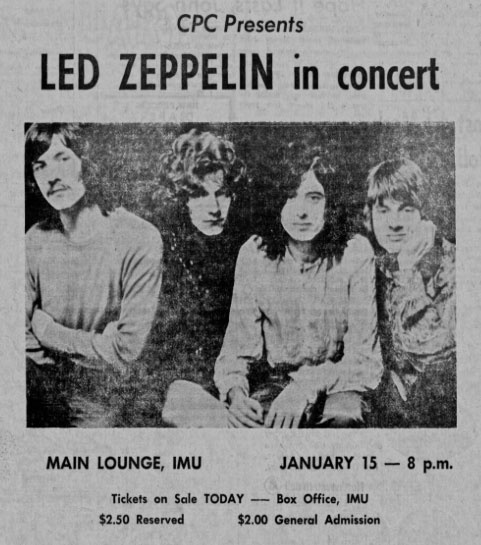
The 1960s saw a shift in the union’s focus from gathering place to a center of arts and culture. The Thieves’ Market, which began in 1964 as an annual showcase of student artwork, persists to this day as a juried exhibition drawing hundreds of regional artists to display and sell their work under the IMU roof. An arts and crafts center, including a potter’s wheel and darkroom, drew community members of all ages.
The Refocus film festival, a collaboration of students, faculty, and staff, was founded in 1965 to showcase film and still photography. It soon drew national attention—and guests that included Hollywood heavyweights Robert Altman and Robert Redford. Not to be confused with the Bijou Film Board, a student organization founded in 1972 to screen independent and foreign films, Refocus was an annual event at the IMU until financial troubles shut it down in 1979. UI Libraries holds a collection of materials related to the festival.
Other popular events at the IMU over the years have been musical concerts—Led Zeppelin performed onstage in the Main Lounge in 1969 while on their first American tour (admission was $2)—and guest lectures.
7. When a UI student became the first person in the nation to burn a draft card on a college campus, it happened at the IMU
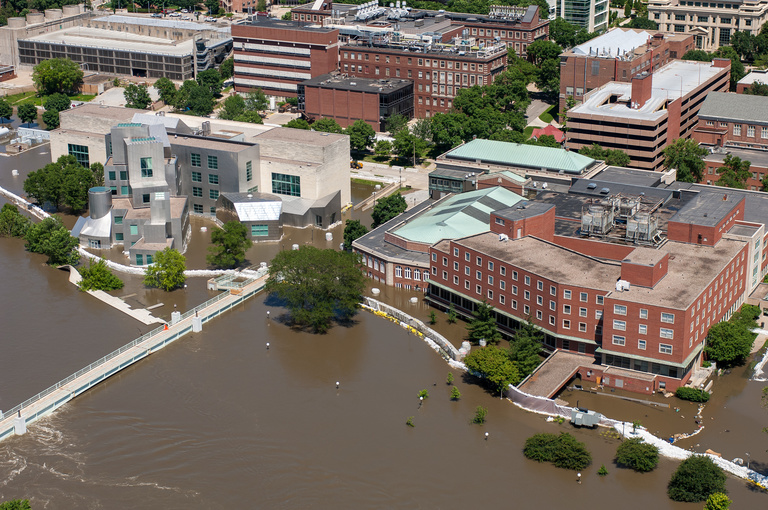
“It was so much water that we took on current,” remembers Cory Lockwood, associate director of event and facility operations and 1998 UI graduate. “The muck out was pretty awful—there were carp flopping out.”
Lockwood was one of many who spent the days leading up to June 13, 2008, filling sandbags to ward off the rising Iowa River—to no avail. The timing of the flood was terrible, he says. “The ground floor was always the most vibrant, and it was a struggle for us to get people to the upper floors. The 2006 renovation with the creation of Hubbard Commons really helped with that. Then the flood hit. On the bright side, after seven years of the ground floor being closed, the students now know the upper floors.”
9. Running the IMU is a huge enterprise

Tom Koeppel, departmental administrator in the biology department, was a longtime employee at the IMU in events services and marketing. He says people would be surprised at the complexity of the building’s operation.
“It’s a multimillion-dollar business, and most people don’t think about all the work that goes on behind the scenes,” says Koeppel, noting the teamwork that helps makes IMU events like Dance Marathon successful.
In addition to facilitating Dance Marathon and Orientation, the IMU accommodated 15,500 room bookings last year alone, from small staff meetings to concerts for 1,600. The building comprises nearly 40 different offices and retail operations, employs about 100 fulltime staff members (and some 400 students), and operates on a budget of just over $19 million.
10. An alumnus devoted his master’s thesis to the history of the IMU
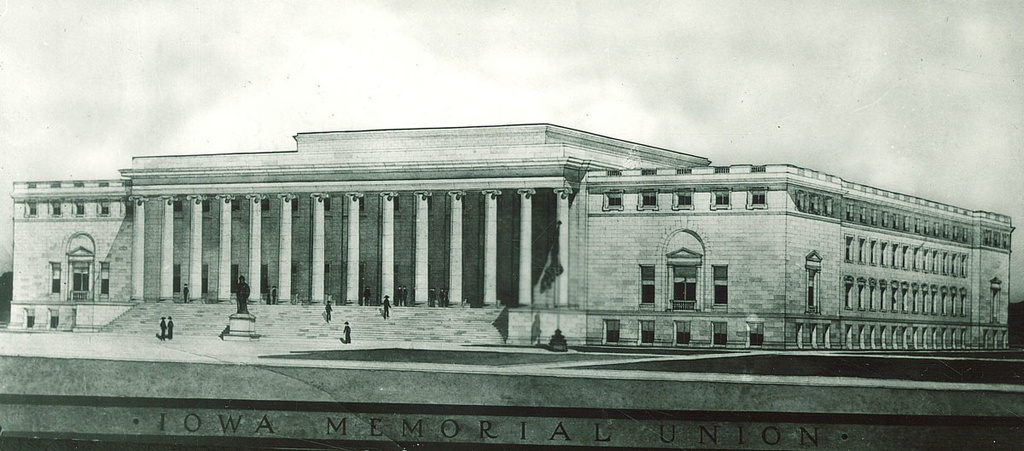
Gary Musselman (M.A. ’69), of North Olmsted, Ohio, submitted a 223-page master’s thesis on the history of the union, and it is on file in the Office of the Dean of Students on the IMU's first floor. He came to Iowa City in 1965 to take a job in the IMU food service; he worked his way up to building manager and was inspired to enter a (now defunct) master’s program at Iowa in student union management.
“There was never a dull moment in that building,” says Musselman, who retired in 2015 from a management position at the City Club of Cleveland. “I talked a student off the bridge, treated a motorcycle accident victim, and dealt with protestors, but there also were so many positive things happening there. I’ve been back to Iowa City twice, and both times I stayed at the Iowa House Hotel.”
Musselman has remained in contact with several of his former IMU colleagues and followed news from the building: “I was surprised and shocked by the flood, but one thing I’ve observed about the IMU over the years is that it always emerges better than it was before.”
To learn more about the Iowa Memorial Union, see imu.uiowa.edu.
The Iowa Memorial Union, a UI landmark, has served as the campus's social and cultural center since 1927. The ground...
Posted by University of Iowa on Thursday, September 10, 2015
